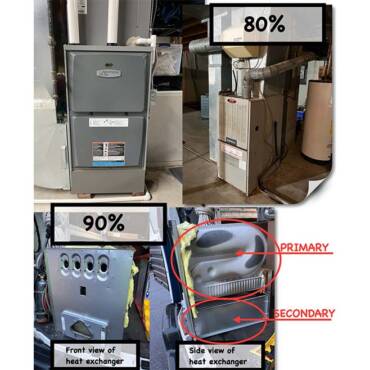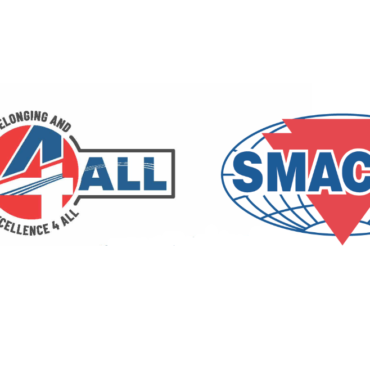On July 11, 2024, the U.S. Environmental Protection Agency (EPA) issued a final rule to phase down the use of hydrofluorocarbons (HFCs), aiming for a 40% reduction from historic levels between 2024 and 2028. This action supports the goals of the American Innovation and Manufacturing (AIM) Act, which seeks to cut HFC production and consumption by 85% by 2036. By doing so, the rule aims to prevent up to 0.5°C of global warming by 2100.
As HFCs continue to be phased out, alternative refrigerants are needed to fill in. Amid the global push for sustainability and tighter regulations on high-GWP refrigerants, CO2 (R-744) has emerged as a leading alternative.
A recent report by the North American Sustainable Refrigeration Council (NASRC) reinforces this sentiment, stating the number of U.S. stores using transcritical CO2 refrigeration systems is projected to grow by 176% between 2024 and 2028, and the number employing CO2 secondary systems is forecast to increase by 620%.
Additional proof of CO2‘s rising impact can be seen in the American supermarket sector. U.S. supermarket chain Kroger announced plans to install CO2 (R744) transcritical units in all of its new stores starting in 2025. Kroger joins numerous other supermarkets, including ALDI, Whole Foods Market, Publix, Albertsons, Walmart, and others, that have already incorporated, or are intending to utilize, the natural refrigerant.
As CO2 continues to increase its market share, this growth highlights a critical need: The industry must prepare its workforce for this transition. While many HVAC technicians are skilled in working with conventional refrigerants, CO2 systems operate under much higher pressures, involve complex transcritical cycles, and require specialized tools and safety protocols. Thus, when it comes to HVACR contracting, what steps can the industry take to meet such a booming demand?
Training CO2 Refrigerant Technicians
Chris Griffiths was immersed in the industry from a young age, informally serving as an apprentice for his dad’s contracting company at a young age.
After grade school, he further cut his teeth on CO2 refrigeration through a training program in Bradford, U.K. While he initially served as a design applications engineer, emergency field needs thrust him on-site, working inside of convenience stores and cold rooms.
Today, he serves as the U.K. Technical Manager at Omega Solutions and an associate lecturer at the University of the West of England, carrying out a mixture of technical, business management, and educational consultancy services for a multitude of manufacturers, contractors, and end users.
“We have far too few technicians for the amount of CO2 work that is out there,” said Griffiths. “The technology is developing at such a rapid pace, and trying to keep up with it from a technician’s standpoint is unbelievably difficult.”
As an educator and proponent of R-744, Griffiths is committed to introducing as many technicians as he can to the nuances of CO2, helping to do his part as the demand continues to soar.
Even with the best teachers, Griffiths acknowledges the real work begins when class is over. And, as techs aim to put their newly acquired knowledge to the test, he encourages them to attach themselves to an experienced mentor and soak in as much wisdom as they can.
“Even if it’s just one day a month, do your best to shadow someone who is a specialist in the field,” he said. “Get them to sit down and explain every aspect of what they’re doing. Then, try it out yourself. If you physically perform an action, it’s very likely you won’t forget how to do it again.”
Regardless how busy everyone is nowadays, technicians truly interested in mastering their trades must make time to sharpen their swords, Griffiths said.
“You have to upskill whenever and wherever you can,” he said. “If you’re in a car, download and listen to an audiobook or podcast. Before you start your day, while eating breakfast, read a scientific paper on your. The more you can do, the better, no matter when it’s accomplished.”
Finally, never curb your curiosity, he said.
“Don’t be scared to ask questions,” Griffiths said. “If no one has the answers, then dive in and solve the problem yourself, but do it safely. Always keep an open mind and ask for clarification if you don’t fully understand a concept.”
Create a Comprehensive Plan
With busy schedules and agendas, many commercial HVACR contracting companies will be tasked to learn CO2 refrigeration on the fly. With little to no time to send technicians to school, companies may consider training their own techs in-house or enrolling in virtual training.
Trevor Matthews, owner of RefrigerantMentor.com, who has two-plus decades of CO2 refrigeration experience, compiled a list of steps contractors should consider to bridge the gap from traditional refrigerants to CO2 refrigeration through his Train the Trainer webcast.
The first step is to identify core competencies and develop customized programs, said Matthews. This is accomplished by auditing the company’s knowledge and adjusting the curriculum accordingly.
“What do your technicians need?” asked Matthews. “You may have people who know very little about CO2, and others who know a lot. Everyone’s going to have different needs, so, as trainers, we need to identify core competencies and develop programs that cater to new technicians and those with great deals of experience.”
Once a program has been created, instructors must emphasize the importance of clear communication.
“When it comes to CO2, there’s a lot of new terms and approaches,” said Matthews. “Trainers should be able to articulate information effectively, encourage participant engagement, and respond to questions and concerns. Find points that resonate with the audience and encourage their ability to learn.”
Once the program is in place, it’s important to prioritize continuous learning and to adjust the curriculum when necessary.
“Implement a robust assessment process to evaluate the effectiveness of the training that’s being delivered,” he said. “This could include quizzes, practical assessments, and feedback from trainees.”
Never Stop Learning
As companies like Kroger and others adopt CO2 systems at a brisk pace, the need for highly trained technicians has become increasingly critical. While the technology offers a promising solution for reducing global warming, it comes with its own challenges, particularly in terms of training and workforce preparedness.
As the industry continues to evolve, it’s essential for HVACR contractors to embrace comprehensive training programs that address both foundational knowledge and hands-on experience with CO2 systems. By fostering a culture of structured, continuous learning and mentorship, companies can ensure their technicians are well-equipped to handle the unique demands of CO2 refrigeration. Ultimately, the key to a successful transition lies in education, adaptability, and collaboration, as the industry works together to meet the growing demand for sustainable refrigeration solutions. Take the steps necessary today so that you don’t fall behind in the near future!
Whether you require installation, repair, or maintenance, our technicians will assist you with top-quality service at any time of the day or night. Take comfort in knowing your indoor air quality is the best it can be with MOE heating & cooling services Ontario's solution for heating, air conditioning, and ventilation that’s cooler than the rest.
Contact us to schedule a visit. Our qualified team of technicians, are always ready to help you and guide you for heating and cooling issues. Weather you want to replace an old furnace or install a brand new air conditioner, we are here to help you. Our main office is at Kitchener but we can service most of Ontario's cities
Source link



